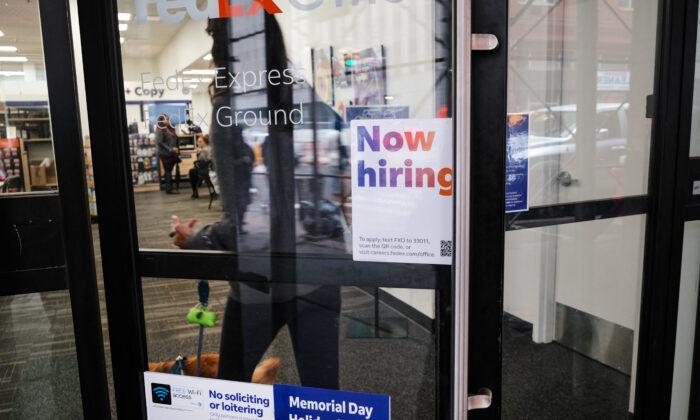The Decline of Full-Time Jobs
Full-time employment levels plunged by 585,000 in July to 134.274 million. This was the largest monthly decline since the COVID-19 crash, which saw 14.7 million full-time jobs vanish.Part-time employment, which is defined as people who work less than 35 hours per week, skyrocketed last month. Part-time jobs soared by 972,000 to 27.153 million.
Moreover, the number of people employed part-time for economic reasons remained the same at 4 million. This metric examines individuals who would have preferred full-time employment but have seen their hours slashed or can’t find full-time positions.
While economists try to avoid focusing too much on a single data point, they assert that significant increases in part-time work typically occur in recessions. According to the Federal Reserve Bank of San Francisco, the rise in part-time employment results from a “cyclical reduction in labor demand that reduces hours worked along with increasing the unemployment rate.”
So an upward trend in part-time employment levels can function as a recession indicator.
That said, part-time jobs remain slightly below the prepandemic level of 27.828 million.
Employment in temporary help services maintained its downward trend, falling 22,000 in July; it’s down by 205,000 since the March 2022 peak.
In recent months, market experts have weighed in on the general slide in temp jobs, warning that if employment levels drop below 3 million, it could be something to worry about. Historically, a sizable decrease in this corner of the labor arena has typically occurred before recessions.
Government Jobs Rising
The BLS reported that government payrolls climbed 15,000 in July. While this was the slowest growth since December, government jobs increased by 370,000 in the first seven months of 2023, accounting for more than 20 percent of employment gains this year.Government payrolls have also outpaced other industries, including professional and business services (170,000), health care (271,000), and leisure and hospitality (178,000).
The government is expanding and will account for a significant portion of job creation in the U.S. economy in 2023.
This trend is alarming, according to economist Stephen Moore. The hiring for federal, state, and local governments this year is more “than any industry in America,” he noted in a newsletter on July 25.
“It was more than mining, manufacturing, construction, wholesale, and transportation combined,” he stated. “With the federal government running a $2 trillion annual deficit and with the COVID crisis long ago behind us, shouldn’t we be systematically downsizing?”
President Joe Biden is poised to add 82,000 employees to federal government payrolls in fiscal year 2024. That would be a 3.6 percent increase from the previous year.
Revise and Consent
The revisions are one aspect of the July jobs report that garnered plenty of attention on Aug. 4.The June jobs data was revised lower by 24,000 to 185,000. The May payroll numbers were also revised down by 25,000 to 281,000. So far this year, every month has seen downward revisions to employment figures.
The New Normal
The state of the U.S. labor market is a mixed picture. Some will contend that it’s beginning to cool, while others suggest that it remains incredibly tight.Curtis Dubay, the chief economist at the U.S. Chamber of Commerce, said the worker shortage persists and is proving to be a significant challenge for employers.
Raphael Bostic, the president of the Federal Reserve Bank of Atlanta, told Bloomberg Television that the economy is slowing “in a fairly orderly way,” and the July jobs report proves it.





